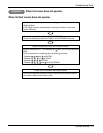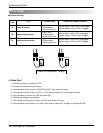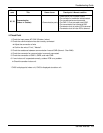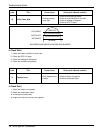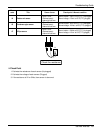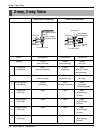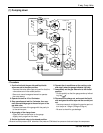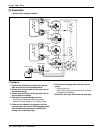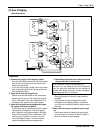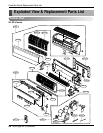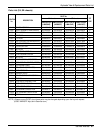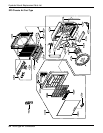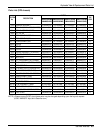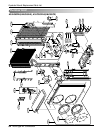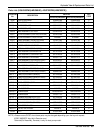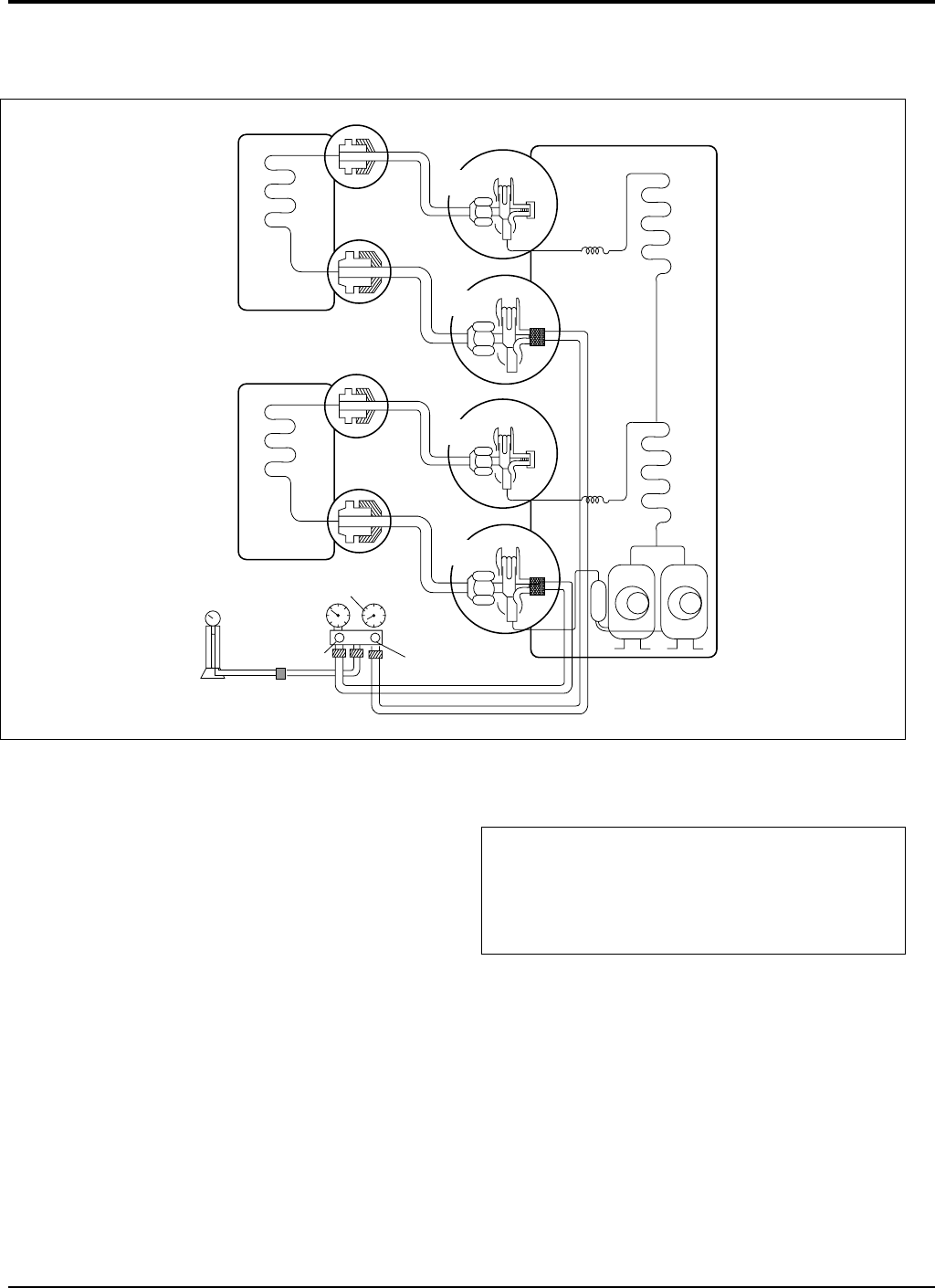
Service Manual 79
2-way, 3-way Valve
(3) Gas Charging
(After Evacuation)
• Procedure
1. Connect the gauge to the charging cylinder.
- Connect the charge hose which you disconnect-
ed from the vacuum pump to the valve at the
bottom of the cylinder.
- If you are using a gas cylinder, also use a scale
and reverse the cylinder so that the system can
be charged with liquid.
2. Purge the air from the charge hose.
-
Open the valve at the bottom of the cylinder and
press the check valve on the charge set to purge
the air. (Be careful of the liquid refrigerant). The
procedure is the same if using a gas cylinder.
3. Open the low handle on the gauge and charge
the system with liquid refrigerant.
- If the system can not be charged with the speci-
fied amount of refrigerant, it can be charged
with a little at a time (approximately 150g each
time) while operating the air conditioner in the
cooling cycle; however, one time is not suffi-
cient, wait approximately 1 minute and then
repeat the procedure(pumping down-pin).
4. Immediately disconnect the charge hose from
the gas side valve's service port.
- Stopping partway will allow the gas to be dis-
charged.
- If the system has been charged with liquid
refrigerant while operating the air conditioner
turn off the air conditioner before disconnecting
the hose.
5. Mount the valve stem nuts and the service port
nut.
- Use torque wrench to tighten the service port
nut to a torque of 1.8 kg.m.(4.2kg.m/5.5kg.m.)
- Be sure to check for gas leakage.
manifold gauge
Charging
cylinder
Hi- handle
(OPEN)
Low-handle
(OPEN)
Check valve
Indoor unit
Outdoor unit
Liquid side
Open
Gas side
2-Way
valve
Open
3-Way
valve
Indoor unit
Liquid side
Open
Gas side
2-Way
valve
Open
3-Way
valve
This is different from previous procedures.
Because you are charging with liquid refrigerant
from the gas side, absolutely do not attempt to
charge with larger amounts of liquid refrigerant
while operating the air conditioner.



